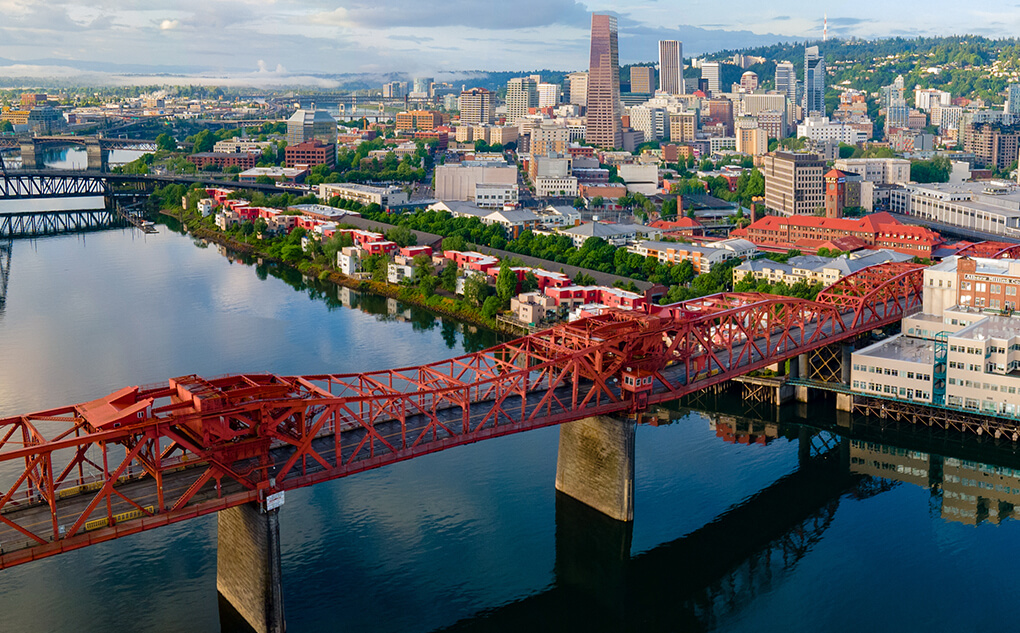Once-Strong Apartment Fundamentals in Portland Slump Among Nation’s Weakest

Portland’s apartment market used to comfortably exceed U.S. averages for occupancy and rent growth. Lately, however, performance fundamentals have changed. It’s been almost 15 years since apartment occupancy in Portland was this low, and operators have recently turned to rent cuts.
Known for its outdoor lifestyle with quality-of-life appeal, Portland has historically had a strong economy and a large population of educated young adults, which generally drives strong apartment demand. But the COVID-19 pandemic hit this West Coast market hard, and Portland has yet to recover all the job losses suffered during that economic downturn. Apartment developers are clearly counting on a turnaround, however, as new supply volumes are still hitting the market at a notable clip.
At the beginning of 2024, RealPage forecasted markets that had great upside potential, and Portland was not one of them. In fact, Portland was deemed a market that had the potential to see challenges in 2024, alongside other West region metros Las Vegas, Los Angeles, San Francisco and Oakland. And thus far, that forecast has come to fruition.
Occupancy Drops to a Recent Low, Inspiring Rent Cuts
Apartment occupancy in Portland dropped below the 94% mark in November 2023 and has hovered there since, according to data from RealPage Market Analytics. The last time Portland occupancy dipped beneath 94% was back in early 2010.
This marks a contrast from how the market used to operate. Occupancy in Portland used to outperform the U.S. norm by a large margin. From 2010 through mid-2016, occupancy in Portland topped the U.S. rate by a comfortable 140 basis points (bps), on average. Toward the end of 2016, occupancy fell notably in Portland, wiping out that sizable lead. From that point on, occupancy in Portland ran right alongside U.S. averages, until recently, when the U.S. pulled ahead, ranking above Portland by an average of about 40 bps since October 2023.
At 93.9% in April 2024, Portland’s apartment occupancy hovered below the pace this market set in the decade prior to the COVID-19 pandemic, when the average was consistently above 95%. Portland occupancy as of April was also notably below neighboring Seattle’s performance (94.5%).
Falling occupancy in Portland has impacted operators’ ability to realize pricing power. As such, effective asking rents were cut by 1.6% in the year-ending April. That was among the worst performances nationwide. Only two other West region markets – Phoenix and Salt Lake City – saw worse price declines in the past year.
So why is Portland – a typically strong apartment market – suffering recently?
Demographic Headwinds Hold Back Portland Potential
Like most markets nationwide, Portland saw a deep drop in employment formation during the pandemic, but this market recovered quickly, adding jobs a peak pace near 9% in the year-ending April 2021. Still, this was below the concurrent national average of 11.5%. And since that peak, job formation in Portland has been dropping off until January 2024, when employment cuts became the norm. In the latest data from the Bureau of Labor Statistics, Portland’s job market contracted by 1.8% in the year-ending March. That was the worst showing among major markets nationwide.
Portland is also one of a handful of markets in the U.S. that have yet to recover all the jobs lost during the pandemic. As of March 2024, the employment base here was still over 9,000 jobs – or 0.8% – shy of pre-pandemic job counts.
Population loss has been a moderate factor recently as well. The Portland metro area lost about 2% of its population – about 4,700 people – between 2020 and 2023, according to estimates from the U.S. Census Bureau. In good news, that loss has slowed recently, with a net loss of less than 1,000 residents between 2022 and 2023.
With demand drivers waning, apartment absorption levels in Portland remain muted compared to historical norms. In the first three months of 2024, however, there was some improvement on that front. Portland absorbed a solid 1,301 units in 1st quarter 2024, which was more than double the market’s average 1st quarter pace in the decade prior to the pandemic. Solid 1st quarter demand took annual absorption to 2,318 units – the strongest annual showing in Portland since 2nd quarter 2022.
However, recent demand volumes still clocked in behind historical averages for this market. Looking again at the decade prior to the pandemic, Portland absorption averaged closer to 3,500 units annually. At that same time, annual supply was also averaging at about 3,500 units. In the past year, apartment demand was at 2,300 units, while concurrent supply was more than double that mark at about 5,000 units.
Looking ahead, another 8,200 or so apartments are under way, with about 6,800 of those scheduled to wrap up construction in the coming year. Strengthening apartment demand in the early months of 2024 is certainly a good sign but the forecast for Portland remains among the nation’s weakest in the year ahead, with occupancy and rent change continuing to underwhelm in the near term.
For more information on the state of apartment markets along the West Coast, including forecasts, watch the webcast Market Intelligence: Q2 West Coast Update.










